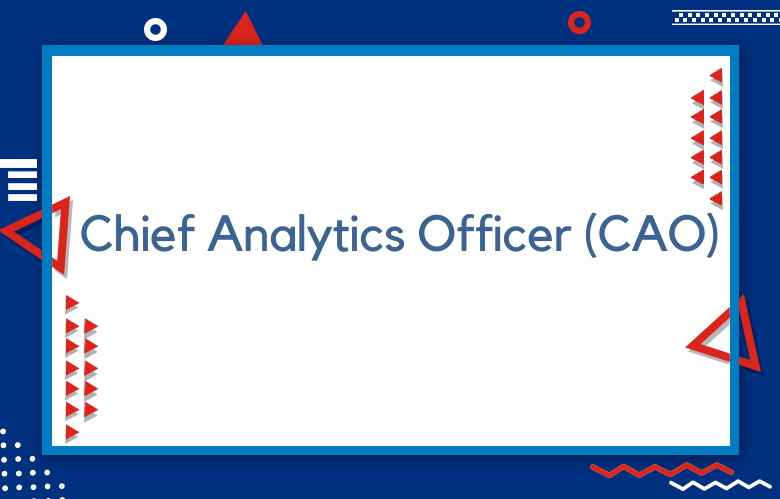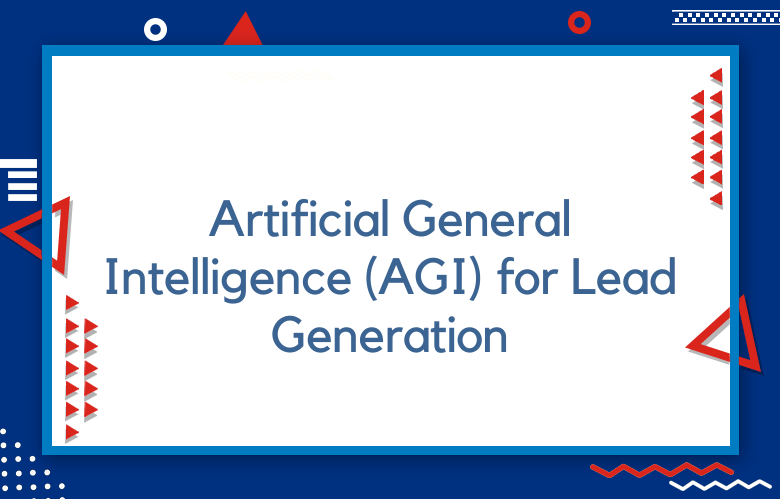Chief Analytics Officer (CAO) Role and Responsibilities

The Chief Analytics Officer (CAO) is a senior executive who is responsible for leading the organization’s analytics and data science initiatives. The CAO is typically responsible for developing and implementing the organization’s analytics strategy, leading a team of data scientists and analysts, and ensuring that the organization leverages data and analytics to drive innovation, growth, and success.
Chief Analytics Officer (CAO) Role and Responsibilities
The role of the CAO is becoming increasingly important as organizations recognize the value of data and analytics in driving decision-making and strategy. By effectively leveraging data and analytics, organizations can gain insights into customer behavior, market trends, and operational efficiency and use these insights to drive innovation, growth, and success.
To succeed in this role, the CAO must possess strong leadership skills, excellent communication and collaboration skills, and a deep understanding of analytics, data science, and the latest trends and best practices in the field.
The CAO’s responsibilities typically include:
Developing and implementing the organization’s analytics strategy aligns with the overall business strategy and supports the organization’s goals and objectives.
Leading and managing the analytics department, including overseeing data scientists, analysts, and other technical staff.
Overseeing data collection, storage, and analysis and ensuring that data is used effectively to drive decision-making and strategy.
Developing and implementing programs and initiatives that leverage data and analytics to drive innovation, growth, and success.
Collaborating with other departments and stakeholders to ensure that analytics initiatives are effectively integrated into all aspects of the business, including product development, marketing, and sales.
Ensuring compliance with all applicable laws and regulations related to data privacy and security.
Overall, the CAO plays a critical role in supporting the organization’s analytics and data science initiatives, ensuring that the organization leverages data and analytics to drive innovation, growth, and success. By leading and managing the analytics department, the CAO helps create a data-driven culture within the organization, where data and analytics are used to inform decision-making and drive strategic initiatives.
Unleashing the Power of Data: The Role of a Chief Analytics Officer
The Chief Analytics Officer (CAO) role is becoming increasingly important as organizations recognize the value of data and analytics in driving decision-making and strategy. The CAO is a strategic leader responsible for developing and implementing data-driven initiatives supporting the organization’s overall business objectives.
To succeed in this role, the CAO must possess strong strategic thinking skills, excellent communication and collaboration skills, and a deep understanding of data analytics, machine learning, and artificial intelligence. The CAO must also have a track record of developing and implementing successful data-driven strategies in a complex and fast-paced business environment.
The CAO’s key responsibilities include:
Developing and implementing the organization’s data strategy aligns with the overall business strategy and supports the organization’s goals and objectives.
Leading and managing the data analytics team, including overseeing data collection, analysis, and visualization initiatives.
Developing and implementing machine learning and artificial intelligence initiatives that drive business value, including predictive modeling, natural language processing, and recommendation systems.
Collaborating with other departments and stakeholders to ensure that data-driven initiatives are effectively integrated into all aspects of the business, including product development, marketing, and sales.
Ensuring compliance with all applicable laws and regulations related to data privacy and security and developing and implementing policies and procedures to protect sensitive data.
Communicating the value of data analytics to stakeholders, including senior executives, board members, and investors, and building support for data-driven initiatives.
The CAO plays a critical role in driving innovation, growth, and success by leveraging data analytics, machine learning, and artificial intelligence to inform decision-making and strategy. By developing and implementing data-driven initiatives that support the organization’s overall business objectives, the CAO helps the organization to make informed decisions, drive continuous improvement, and achieve its goals.
In addition to these core responsibilities, the CAO may also identify new opportunities for data-driven initiatives, build relationships with external stakeholders, and mentor and develop data analytics talent within the organization.
The Strategic Mind: Chief Analytics Officer’s Key Responsibilities
The Chief Analytics Officer (CAO) is a strategic leader who is responsible for developing and implementing data-driven strategies that support the organization’s overall business objectives. The CAO plays a critical role in driving innovation, growth, and success by leveraging data analytics, machine learning, and artificial intelligence to inform decision-making and strategy.
To succeed in this role, the CAO must possess strong strategic thinking skills, excellent communication and collaboration skills, and a deep understanding of data analytics, machine learning, and artificial intelligence. The CAO must also have a track record of developing and implementing successful data-driven strategies in a complex and fast-paced business environment.
The CAO is a critical strategic leader responsible for driving innovation, growth, and success through developing and implementing data-driven strategies. By leveraging data analytics, machine learning, and artificial intelligence, the CAO helps the organization to make informed decisions, drive continuous improvement, and achieve its business objectives.
Driving Business Success with Data: The CAO’s Roadmap
The Chief Analytics Officer (CAO) plays a critical role in driving business success by leveraging data analytics, machine learning, and artificial intelligence to inform decision-making and strategy. To succeed in this role, the CAO must develop and implement a data-driven roadmap that supports the organization’s overall business objectives.
The Data Whisperer: Mastering the Chief Analytics Officer’s Role
The Chief Analytics Officer (CAO) is a strategic leader who is responsible for developing and implementing data-driven initiatives that support the organization’s overall business objectives and drive innovation, growth, and success. To succeed in this role, the CAO must master a range of skills and capabilities, including strategic thinking, leadership, communication, collaboration, and technical expertise.
Strategic Thinking
The CAO must be a strategic thinker who can develop and implement data-driven initiatives aligning with its overall business strategy and supporting its goals and objectives. The CAO must be able to identify new opportunities for data-driven initiatives and assess their potential impact on the organization.
Leadership
The CAO is a leader who must inspire and motivate the data analytics team, build relationships with external stakeholders, and mentor and develop data analytics talent within the organization. The CAO must also be able to navigate complex challenges and opportunities and lead change within the organization.
Communication and Collaboration
The CAO must be an excellent communicator who can effectively communicate the value of data analytics to stakeholders, including senior executives, board members, and investors. The CAO must also be an effective collaborator who can work with other departments and stakeholders to ensure that data-driven initiatives are effectively integrated into all aspects of the business, including product development, marketing, and sales.
Technical Expertise
The CAO must have a deep understanding of data analytics, machine learning, and artificial intelligence and must be able to apply these technologies to drive business value. The CAO must also be able to assess the organization’s data analytics capabilities and identify opportunities for improvement.
Conclusion:
The Chief Analytics Officer (CAO) plays a critical role in modern organizations, developing and implementing data-driven strategies that drive innovation, growth, and success. The CAO is responsible for building and leading a team of data analysts, scientists, and engineers and for developing and implementing a data-driven culture within the organization.
To succeed in this role, the CAO must possess a range of skills and capabilities, including data strategy, leadership, communication, and collaboration. The CAO must also have a deep understanding of data analytics, machine learning, and artificial intelligence and must be able to apply these technologies to drive business value.



